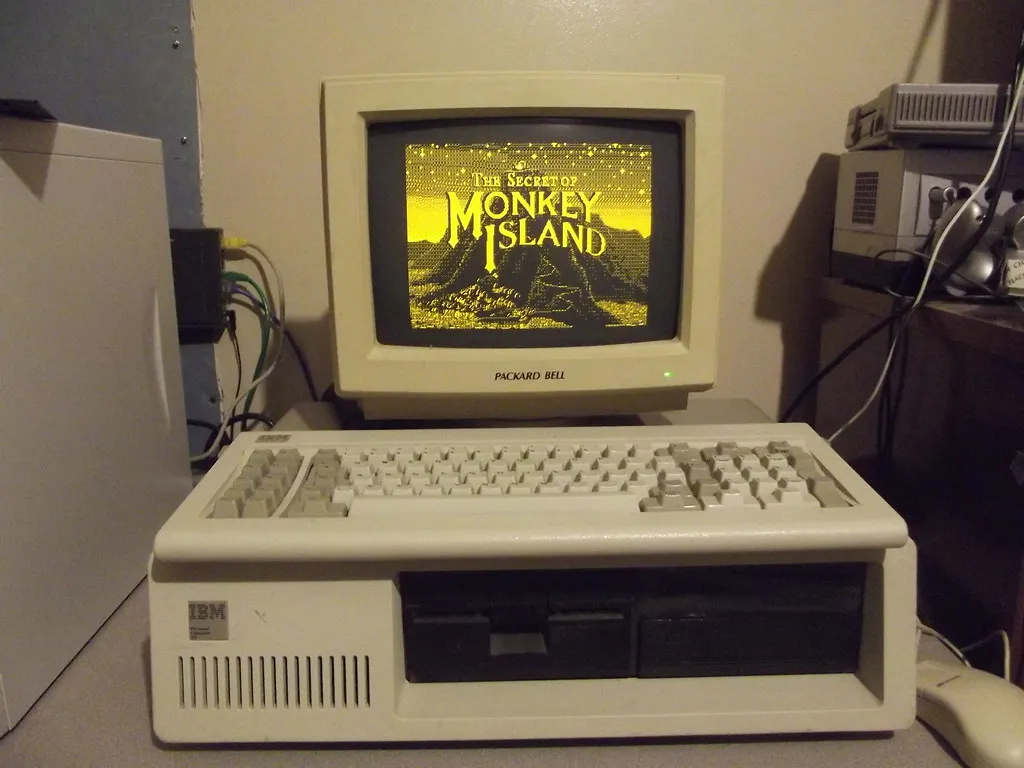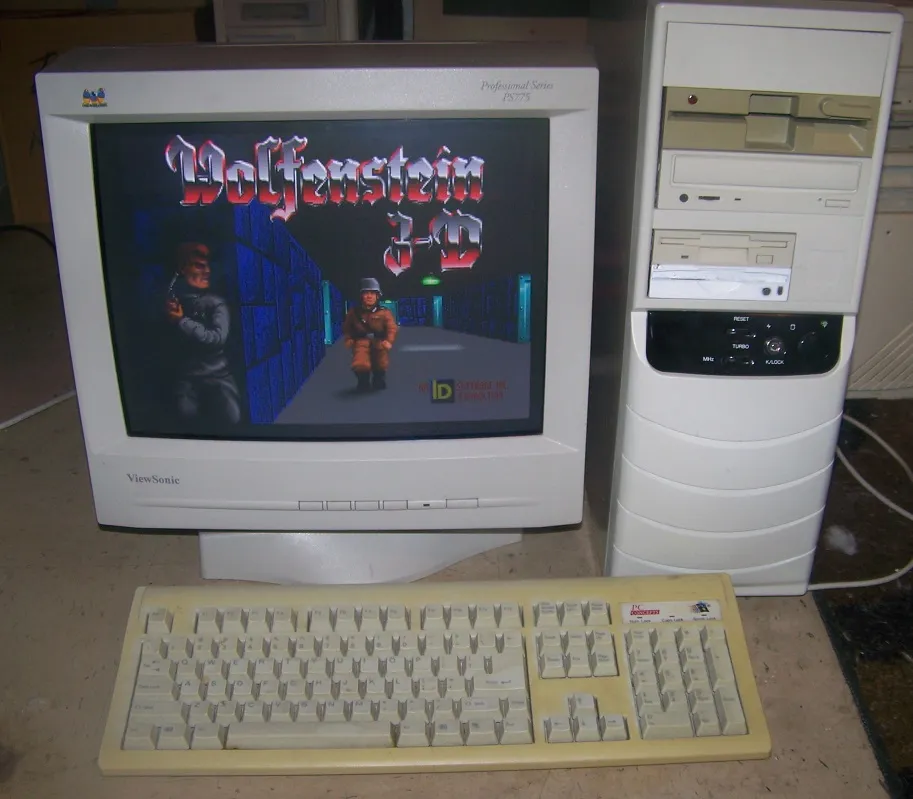Which DOS era computer makes for the best retrogaming PC?
Which DOS era computer makes for the best retrogaming PC?
I guess I should add some criteria here. Retrogaming in this context really refers to DOS based gaming. I'm also talking about real DOS era computers or at least something running DOS natively and not via emulation (e.g. DOS Box). Also, this only refers to IBM PC compatibles and clones, not other computers like the Commodore 64, Amiga, Atari 8-bit, Apple II, Apple IIgs. TRS-80, Atari ST, etc. That's a whole other discussion.
I've split the choices mostly amongst socket/slot type as that tends to make for a pretty good division point. The choices are:
XT/AT (basically anything pre-386)
386
Socket 1-3 (486 based PCs)
Socket 5 (early Pentiums, early K6-2s)
Socket 7 (later Pentiums usually with MMX, some K6-2s and K6-3s, some Cyrix)
Super Socket 7 (later Pentiums, K6-2/3/+, Cyrix)
Slot 1 (Pentium II, early Katmai Pentium IIIs and Celerons)
Slot A (classic Athlons)
Socket 370 (later Coppermine and Tualatin based Pentium IIIs and Celerons)
Something newer
The consensus on the net (as much as there could be said to be one) seems to point to Super Socket 7 as being the best choice. Personally, I disagree but I'll get to that below as I summarize each option.

IBM PC XT
XT and AT era PCs can most easily run the earliest games. Running these games on later PCs often requires doing something extra to slow things down. However, XT/AT era PCs can't run a great many later DOS games and early DOS games did not compare well to gaming on other computers at the time like the Commodore 64.

Typical 386 with Wolfenstein 3-D
The era of the 386 is really when PC gaming came into its own. A reasonably fast 386 with VGA graphics can run a vast swath of the available DOS games. Many games required no more than a 386 even into the Pentium era. You could run Doom on a 386 (though not necessarily the best experience). Which is the problem. Anything that you can run on a 386 you can run better on a 486. There was still a large era of DOS games that the 386 can't run (or run acceptably).

486 from Gateway 2000
The era of the 486 (Socket 1-3) is when Doom was released. In a sense this was the beginning of a new era of DOS gaming. Other computer gaming platforms like the Atari ST and Amiga died out in this era (at least in a commercial sense). My first PC compatible was a 486. Companies like AMD ramped up the speed of the 486 late in its life to remain competitive with early Pentiums. But again, the 486 still isn't fast enough to play all of the best DOS games. Most of them perhaps, but definitely not all.

Pentium from Gateway 2000
While the 486 era may have marked a new era of PC gaming, it was the Pentium (Socket 5) that really correlated with the beginning of the Internet age and started to bring computers into many more households. A Pentium was the ideal machine for Microsoft's Windows 95 (still DOS based) operating system (though it worked well enough on my 486). And while Doom may have popularized the FPS genre primarily on the 486 and even 386, it was the Pentium that was needed to acceptably run all the FPS games that followed over the next several years.
Socket 7 made things a little confusing, at least just to go by the socket. Socket 7 allowed for but didn't require split voltage. Without split voltage, the only thing Socket 7 added was slightly higher clock speeds via a higher multiplier (Socket 5 could go to 133 MHz, Socket 7 could go, to 166 or 200). With the split voltage however, you could move up to MMX based processors (as fast as 233MHz) from Intel, or you had some additional AMD K6-2 and K6-3 options that were better values though by the time Quake came around these were not the best choice.
Super Socket 7 was perhaps the platform with the widest possible number of processor choices. Want to run an early Pentium? No problem. Pentium MMX. Easy peasy. Cyrix 686 or MX? Yep, it can do that too. K6-2 or K6-3? Probably the best choices. K6-2+ and K6-3+? While made for mobile, many Super Socket 7 boards supported these as well. The biggest enhancement over standard Socket 7 was support for a 100MHz bus (Socket 7 was limited to 66 MHz).

Gateway Pentium II G6-333 (Slot 1)
The Slot 1 era was perhaps among the most interesting. It overlapped substantially with both the Super Socket 7 and Slot A eras. At no time were there more choices. Intel was the safe bet with the Pentium II via Slot 1. However, there were better values for your dollar to be had. Early Pentium IIIs were essentially Pentium IIs with SSE but they were built on an improved process that allowed them to clock higher. Perhaps these would have been more accurately called Pentium II+. The nice thing about early Slot 1 machines is that they could be upgraded with newer, much faster socket 370 celerons with a simple adapter.

Gateway Select 750 (Athlon Slot A)
Slot A was AMDs answer to Slot 1 and hosted the successor to the K6-2/3 line, the Athlon. Just like the Pentium II/early Pentium III, the Slot A interface was designed so that L2 cache could be added close to the processor that was significantly faster than the motherboard cache popular before that time. Clock for clock, the Athlon was faster than the early Pentium IIIs. The only downside was that they did not have SSE which was not a big deal at the time. These would be the chips that took AMD to 1 GHz and beyond.
Socket 370 was the host to later Coppermine based Pentium IIIs. The biggest difference between these and the Slot 1 variety was that they moved from off-chip based half speed L2 cache to on chip full processor speed cache. Even though in most cases it was half the amount of cache (256K vs. 512K) of the earlier Pentium IIIs, the faster speed more than made up for that difference. These would be the chips that took Intel to 1 GHz and beyond. Intel had caught up to AMD once again.
One choice I left out was Socket 462/Socket A. This one sort of straddles the line between "retro" and "modern" in terms of gaming. Early on this socket was used for faster Athlons (Thunderbird) which like the later Pentium IIIs, moved L2 cache onto the CPU. These would have been included in systems that came with Windows 98. However, Socket A was also used for the later Athlon XP which would have been in XP era computers.
In addition to all of the above options, you can of course use newer platforms. DOS will run on even the newest Intel or AMD processors. However, getting DOS based sound, video, network, and game controller drivers for a modern platform is an entirely different story. It CAN be done on some systems later than the P3 and Athlon though mostly by finding the rare newer hardware that still had DOS drivers or worked with drivers from older devices or by mixing in older video cards/sound cards with newer motherboard/CPU combos.
So of all those options, which is the best? As I said above, Super Socket 7 seems to be a fan favorite and it certainly offers the most variety. However, my choice would probably fall between a Slot A and Socket 370. Why? These were the fastest machines available that came with a DOS based operating system. Windows XP was introduced early in the Pentium 4 era and after that, DOS drivers for new hardware became scarce. So in theory, you should be able to pick up a 1GHz (or slightly faster even) Pentium III or Athlon and with a video card and sound card of the same era be able to play just about any DOS game ever made. You might be able to do the same with some early Pentium 4s but those weren't much faster than Pentium IIIs anyway. Of the two, I would probably pick the Pentium III because by the time clock speeds reached 1GHz I believe the Pentium III was a little faster and it also supported SSE which was a nice bonus even if little used at the time. So at the end of the day, why go with a Super Socket 7 (which could be notoriously finicky anyway depending on your combination of hardware) for which the fastest processor ran at about 550MHz when you could have a 1GHz+ Athlon or Pentium III? No reason at all that I can think of. For sheer nostalgia and variety of configurations to play with Super 7 based PCs might win out but in terms of best bang for your buck retrogaming DOS machine? I don't see how it comes close to a Socket 370 or Slot A based computer. But by all means, tell me what your choice would be by voting in the poll above and/or commenting below.
- XT/AT (basically anything pre-386)
- 386
- Socket 1-3 (486 based PCs)
- Socket 5 (early Pentiums, early K6-2s)
- Socket 7 (later Pentiums usually with MMX, some K6-2s and K6-3s, some Cyrix)
- Super Socket 7 (later Pentiums, K6-2/3/+, Cyrix)
- Slot 1 (Pentium II, early Katmai Pentium IIIs and Celerons)
- Slot A (classic Athlons)
- Socket 370 (later Coppermine and Tualatin based Pentium IIIs and Celerons)
- Something newer
Answer the question at dpoll.xyz.
